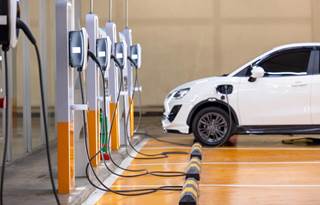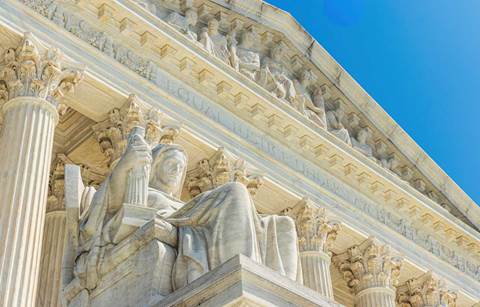The One, Big, Beautiful Bill (OBBB) included provisions that bring an early termination to federal income tax credits related to electric vehicles, fuel cell vehicles, and various types of alternative fuel refueling property. Importantly, this termination doesn’t apply to qualifying vehicles that are acquired on or before Sept. 30, 2025. Recent IRS guidance implementing this termination has established a two-part test (written binding contract and at least a nominal payment) to clarify when a vehicle is considered acquired. With the September 30 date looming, individuals, commercial businesses, and tax-exempt organizations still have an opportunity to establish credit eligibility.
An expansion and then termination of EV tax credits
Federal tax credits related to electric and alternative fuel vehicles have undergone a cycle of expansion and termination over almost two decades. Such credits were initially introduced and expanded by Congress in the late 2000s. Efforts to drive further adoption of EVs then reached a high-water mark in 2022 with the enactment of the Inflation Reduction Act (IRA). That legislation expanded previously existing tax credits available for the purchase of new clean vehicles and alternative fuel refueling property while also creating new tax credits for the purchase of used clean vehicles and commercial clean vehicles. The IRA also created the direct pay program, which enabled non-traditional taxpayers (e.g., governments, universities, tax-exempt organizations, etc.) to claim the cash benefits of tax credits in the absence of federal income tax liabilities.
More recently, the OBBB ushered in an accelerated termination of such credits beginning in 2025. That bill didn’t make substantive changes to the credits themselves but instead terminated the credits — albeit with important transition details. While this action delivered on campaign promises from the 2024 election cycle, limited options remain open to claim credits for EVs, plug-in hybrids, and recharging equipment.
So, what are the EV credits and their termination dates?
The landscape of IRA tax credits, as modified by the OBBB, available for EV and alternative fuel vehicle acquisitions include the following:
- Section 30D: New clean vehicle credit – As modified by the IRA, this credit has been available for the purchase of new plug-in electric vehicles (EVs) or fuel cell vehicles (FCVs) since 2022. The maximum credit is $7,500, but is subject to a two-tier calculation (each element either $0 or $3,750) and an income-based phase out. Additional requirements are detailed in an analysis of individual taxpayer credit opportunities. This was originally set to expire at the end of 2032. However, the OBBB terminates Section 30D for qualifying vehicles that are acquired after Sept. 30, 2025.
- Section 25E: Previously owned clean vehicle credit – The IRA also created a new credit that mirrors the new clean vehicle credit rules but applies to qualifying used EVs or FCVs. The credit is equal to 30% of the sale price, up to a maximum credit of $4,000. Additional requirements apply to this credit and there is also an income-based phase out. The OBBB terminates the Section 25E credit for qualifying vehicles acquired after Sept. 30, 2025.
- Section 45W: Qualified commercial clean vehicle credit – The IRA established a new business-focused clean vehicle credit that applies to both passenger vehicles and heavier trucks. The maximum credit is equal to $7,500 for passenger vehicles (e.g., those with gross vehicle weight ratings under 14,000 pounds) and $40,000 for those equal to or exceeding 14,000 pounds in gross vehicle weight rating. Additional requirements apply to restrict this credit based on the nature of the taxpayer, the use of the vehicle, or characteristics of the vehicle itself. Similar to the other EV credits, the OBBB terminates the Section 45W commercial clean vehicle credit for eligible vehicles acquired after Sept. 30, 2025.
- Section 30C: Alternative fuel vehicle refueling property credit – The alternative fuel refueling property credit is calculated as a percentage of the cost of specific types of refueling property. This includes EV charging, but goes further to include property dispensing ethanol, natural gas, hydrogen, biodiesel, and others. This credit has been available with respect to residential installations and for commercial or other installations. Notably, the refueling credit requires that the installation occur within an eligible census tract. The OBBB has triggered an early termination of this credit, but a longer period of adoption has been extended. Specifically, Section 30C remains available for qualifying property that’s placed in service before July 1, 2026.
Implementation of EV credit termination creates opportunities
The term “acquired” is significant for EV credits since it defines the degree of action required by the end of September to establish credit eligibility. The IRS recently published a set of frequently asked questions (FAQs) on its website to implement the early termination of these vehicle and refueling property credits. Such guidance establishes two core criteria as the basis for a deemed acquisition date for EV/hybrid vehicle purchases:
- Binding contract – Similar to other tax situations involving “acquired after” transition rules, the IRS FAQs note that a written binding contract is the first element to establishing the acquisition date.
- Payment of at least a nominal deposit – In some cases, a binding contract alone might be sufficient to establish an acquisition date for tax purposes. However, the EV credit guidance clarifies that a payment must also be made. How much is required? The answer provided is that a “nominal” deposit is sufficient to support a binding contract. Further details are nonexistent as of the date of this article.
Importantly, the above requirements don’t involve the physical delivery of the vehicle to the buyer. In fact, the answer to question three — What effect does “acquisition” of a vehicle have on a taxpayer’s ability to claim a credit under sections 25E, 30D, and 45W? — goes on to detail the fact that a taxpayer may meet the acquired test while only becoming eligible to claim the credit at a future date:
“If a taxpayer acquires a vehicle by having a written binding contract in place and a payment made on or before Sept. 30, 2025, then the taxpayer will be entitled to claim the credit when they place the vehicle in service (namely, when they take possession of the vehicle), even if the vehicle is placed in service after Sept. 30, 2025. Taxpayers should receive a time of sale report from the dealer at the time they take possession or within three days of taking possession of the vehicle.”
The answer to question three doesn’t describe tax years, but it’s notable that the OBBB didn’t provide any further clarification as to the termination of these credits. Accordingly, it may be possible for a taxpayer that satisfies the acquired test above to take delivery of the vehicle in 2026 and claim the associated tax credit at that time.
What does it all mean for taxpayers seeking to maximize EV tax credits?
Considerable attention has been paid to EV credits for well over a year. This was a specific point of emphasis during the election cycle leading to the November 2024 election. Moreover, Republicans in Congress and the Trump administration were focused on such credits during the legislative process creating the OBBB. In that respect, the early termination of the EV and recharging credits is certainly not a surprise.
The more nuanced consideration is the fact that the IRS FAQs provide a very low bar for establishing a vehicle acquisition date. Thus, taxpayers seeking to maximize tax credit opportunities should carefully consider steps to establish a written binding contract for the purchase of a qualifying vehicle and make at least a nominal payment in support of such contract. Such actions may well establish eligibility for a credit even when the vehicle is delivered and placed in service at a later date.





